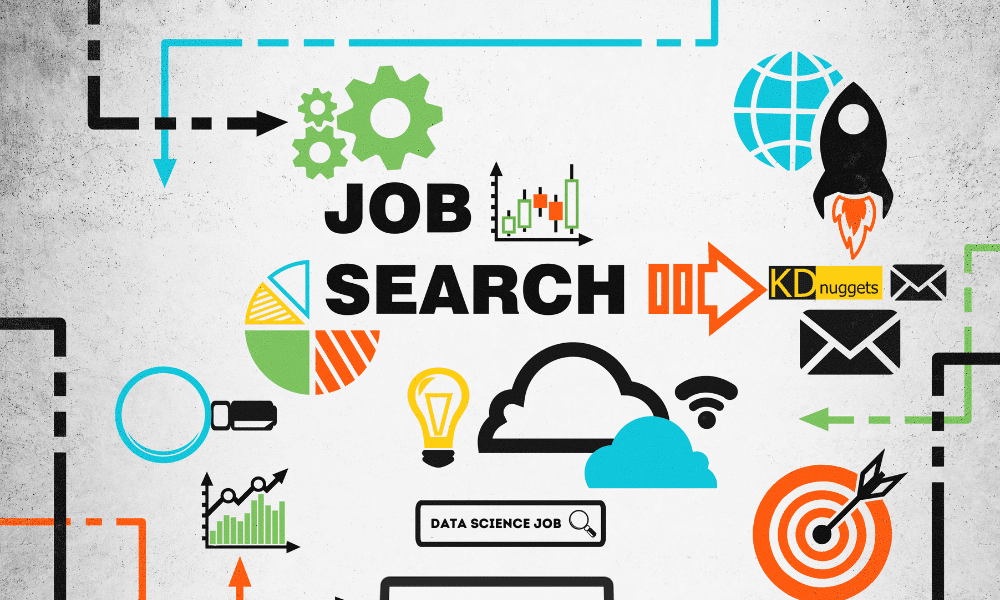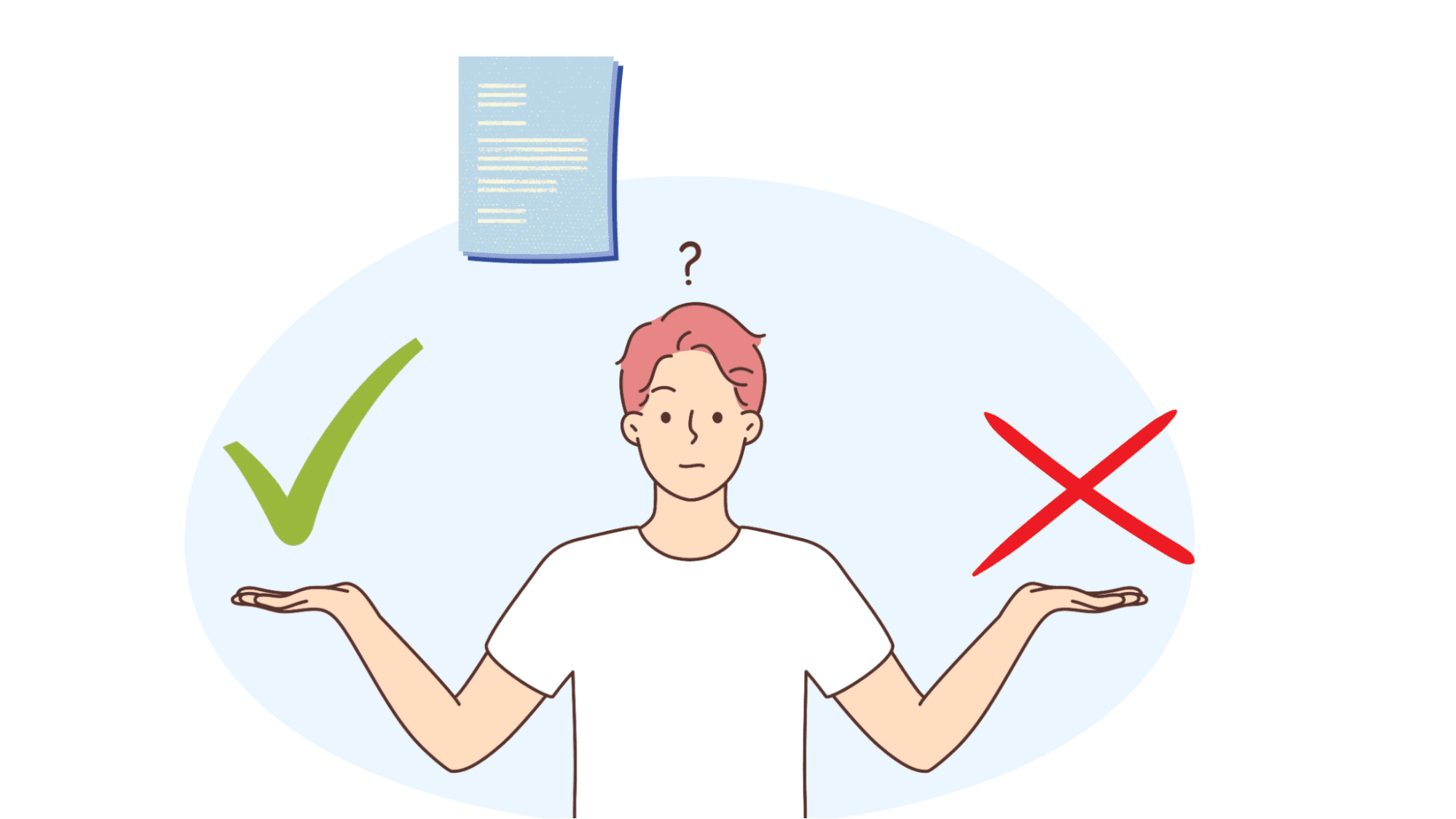
Editor's Image
Are you tired of applying for data science positions and not hearing back from companies? Maybe you managed to get a couple of interviews but couldn't convert them into offers? Well, you're not alone.
The job market is brutally competitive now. So just because it's hard doesn't mean you're not good enough. That being said, it is important and useful to take a step back and see as and where You can get better. And that's exactly what this guide will help you with.
We'll go over common reasons why aspiring data professionals like you struggle to make the move. And how can you improve your chances of getting interviews and getting that job you want!
It's a hard truth. So let's face it.
Let's say you've applied for several data science positions at companies you're interested in and have been shortlisted for interviews.
Congratulations! You are on the right track. The next goal is to convert the interview opportunity into a job offer. And the first step is to break that coding interview.
You will first have a round of timed coding interviews (to test your problem-solving skills), followed by a round of SQL coding.
But coding interviews is difficult to crack, even for seasoned professionals. But constant practice and spaced repetition can help you ace these interviews.
Regularly practice coding interview questions on platforms like Leetcode and Hackerrank.
If you are looking for resources, check out:
Once you have cleared the coding interviews, focus and prepare for the technical rounds. Improve your machine learning fundamentals. Also review your projects so you can explain their impact with confidence.
It's true that recruiters spend only a few seconds reviewing your resume and deciding whether it goes to the next phase or the rejection pile.


Image by author
Therefore, you must put a lot of effort into writing your resume. Be sure to tailor your resume to the job specifications.
Here are some resume tips:
- Includes sections on relevant experiences and education.
- List experiences and education in reverse chronological order.
- Summarize the experience in bulleted lists, quantifying the impact and adding concise explanations.
- Includes a section of relevant projects. Explain projects in concise bullet points. Also include links to the projects.
- Add a relevant skills section grouped by category such as programming languages, tools and frameworks, etc.
I will also suggest using a simple single column layout which is easier to analyze than complicated and fancy layouts.
When applying for a job, your resume and LinkedIn profile should be consistent without conflicting details. And they must also be aligned with the experience and skill set that the position demands.
However, there are a couple of caveats that you should avoid.
Your profile is too specific
Let's say you're interested in medical imaging and computer vision. So almost all of your projects are in computer vision. Such a profile may be ideal for a computer vision engineer or computer vision researcher position.
But what happens if you apply for a data scientist position at a fintech company? It is clear that you do not stand out as a strong candidate.
Your profile is too generic
If you are an aspiring data scientist with strong SQL skills and experience building machine learning models, you can also apply for data analyst and machine learning engineer positions.
But you don't want your resume or candidate profile to look like someone who wants to be a data analyst, machine learning engineer, and data scientist all at the same time.
If you are interested in all of these roles, have separate resumes for each one.
It's important to find a middle ground that allows you to showcase your experience and stand out as a potential candidate with a broad skill set aligned with the job requirements.
Your projects help you gain a competitive advantage over other candidates. So choose them wisely.


Image by author
Some aspiring data professionals include certain projects on their resume and portfolio that they shouldn't be. Yes, there are some beginner projects that are good to learn, but you should AVOID showing them in your portfolio.
Here are some:
- Titanic Survival Prediction
- MNIST handwritten digit recognition
- Classification using the iris data set.
- Projects on the wine data set.
Just to name a few. These projects are too generic and basic to get you an interview (let alone job offers).
So what are some interesting projects, especially if you are a beginner looking to enter this field?
Here are some beginner level projects that will help you showcase your skills and emerge as a stronger candidate:
Use real-world data sets to build your projects. This way you can show many important skills: data collection, data cleaning, and exploratory data analysis in addition to model building.
Also include projects that are inspired by your interest. As I suggested in a previous pandas guide, try turning your interests and hobbies into interesting projects that will help you leave an impression on the interviewer.
Another common obstacle that aspiring data professionals face is their educational background. Breaking into data science can be especially difficult if you have specialized in a field like sociology, psychology, and the like.
While your skills (hard and soft skills) eventually matter, you must remember that you are competing with those who have a bachelor's or advanced degree in a related field.
So what can you do about it?
Look for ways to constantly improve your skills. Remember, once you land your first data roleYou can take advantage of your experience in the future.
Find ways to work on relevant projects within your company. If your company has a dedicated data team, try taking on a small side project.
Learning in public is very important, especially when you're trying to get your first job (and even after, honestly).
I started writing online at the end of 2020. Since then, I've gotten most of my opportunities through my work (tutorials and technical deep dives) that I published online.
So how and where to start? Take advantage of social media platforms like LinkedIn and Twitter (X) to share your work with the community:
- Did you build a project? Share it with your network. Ask for feedback. Improve.
- Did you write a data science tutorial? Share it with your network.
- You learned something new? Share it anyway.
- Did you find a bug that you finally fixed? Yes, it is worth sharing.
What you code on your laptop stays on your laptop. So be prepared to put yourself out there and share what you build and learn.
Building a strong portfolio and online presence can be a huge help in the job search process. Because you never know what project or article your future employer might be interested in.
Because of how competitive the job market is right now, you need to go beyond simply applying for jobs and start being more proactive.


Image by author
Here are some simple steps that can help you make a difference:
- Select the companies that interest you.
- Check relevant vacancies.
- Contact the recruiter with your resume and portfolio explaining because You would be a good candidate for the role.
- Connect with other professionals. Get into the habit of networking even when you have a stable full-time job.
Joining online data science communities can also be very helpful!
And that's a wrap. Here's a quick review of what we've discussed:
- Prepare to code interviews. Practice on platforms like Leetcode and Hackerrank.
- Tailor your profile to align with job requirements. But be consistent.
- Make an effort to work on your resume and project portfolio.
- Start learning in public. Share what you build and learn.
- Be proactive in networking with other professionals.
Good luck on your job search journey. I hope you get your position in data science soon. What else would you add? Let us know in the comments.
Bala Priya C. is a developer and technical writer from India. He enjoys working at the intersection of mathematics, programming, data science, and content creation. His areas of interest and expertise include DevOps, data science, and natural language processing. He likes to read, write, code and drink coffee! Currently, he is working to learn and share his knowledge with the developer community by creating tutorials, how-to guides, opinion pieces, and more.






